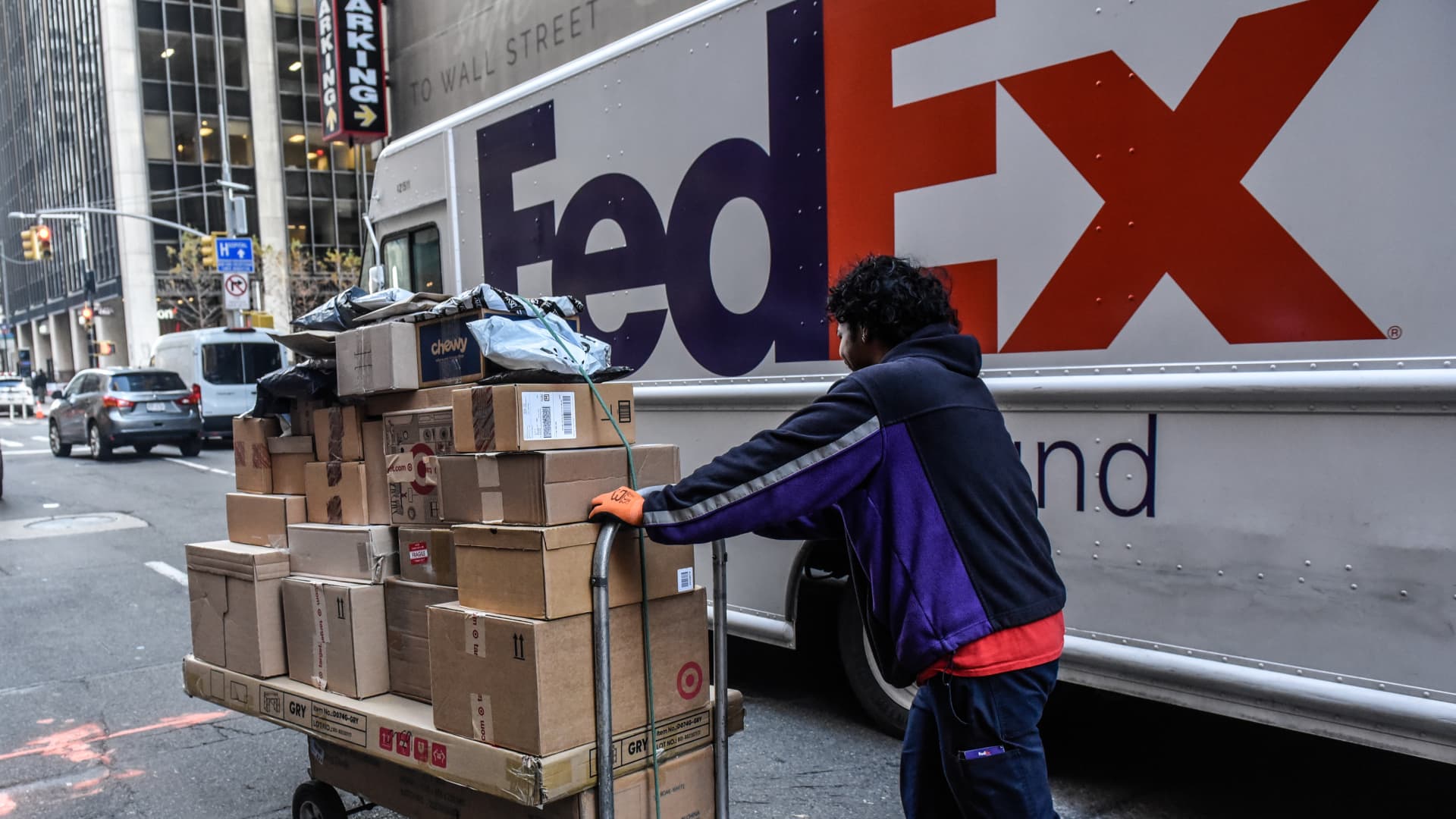
Not many of the largest publicly traded companies report earnings within the last two weeks of the year, but the few that are may provide some clues to the health of the consumer. Auto loan delinquencies have been rising sharply and used car prices have been falling. CarMax may reveal whether this situation is worsening further. Nike and Carnival represent more discretionary spending, so there may be some insights into consumer mindsets as they report. However, of the names on the table below, many will be getting deliveries in the coming days from FedEx Corp. (FDX) . Is FDX a good stocking stuffer or is there a better way to play it? As usual, names highlighted in green are holdings in our long-only event-driven strategy, and in this case the upcoming event is earnings. FedEx Corp is up more than 60% year-to-date, and more than 100% since the post-earnings decline in September 2022 — its largest in decades. So what has changed that has reignited investor enthusiasm? The secular tailwind for the industry remains e-commerce, but that was true a year ago when investors were fleeing and the company saw a greater than 50% peak-to-trough decline. At less than 14 times forward earnings estimates FedEx is trading at a seeming valuation discount to the S & P 500, but that too was true last year when the stock price and multiple to earnings was much lower (it was below 9 times earnings in late September of last year). In any case, while fundamentals will drive the performance of a stock in the long-term, it is of lower utility as a short-term trading tool. The Good: Revenue declines have stabilized, and FedEx has gained market share from UPS and Yellow (which had a notable bankruptcy earlier this year) The company’s DRIVE and Network 2.0 cost-saving initiatives collectively target nearly $6 billion in savings over the next couple years. This is a meaningful number for the bottom line. To put things in perspective the trailing 12 month adjusted net income for FedEx is ~ $4.1 billion. Management is targeting 4-6% compound annual growth from small and medium businesses (aka “SMBs”) and Europe. The Bad: FedEx is highly consumer-driven. A positive when things are going well, but a potential weakness if the economy deteriorates. SMBs revenue and earnings growth has lagged that of major tech companies such as the “Magnificent Seven”, and their growth is not as idiosyncratic or propelled by innovation. So like consumers, small and medium sized businesses are likely more vulnerable in an economic downturn. Although trading at a relative discount to peers and the broad market, FedEx valuation has typically lagged both their peers and the market for years. I personally believe that with good execution that gap should narrow, but one could easily have made a similar case for the past several years and it has still failed to converge. The Verdict: Although I remain positive on FedEx longer term — demonstrated by the fact we own it in our portfolios, it’s a tough name to chase after such an epic run. As an alternative to purchasing the stock, options offer a reasonable way to make a bullish bet while defining one’s risk. A move as severe as the one in September 2022 is unlikely, but it serves as a reminder that stocks can move very sharply on earnings. The Trade: Buy Feb 16 $280 call for $13.80 Sell Feb 16 $320 call for $1.58 Couple things to note about this trade . Expiration – going out to February gives the trade some time FedEx typically moves 8% in the month following earnings, this trade, which lays out $12.20/share in premium ($1,220 total as each contract represents 100 shares) or just over 4% of the current stock price. If the stock declines this represents the maximum loss. On debit vertical spreads I generally prefer a payoff of 3-to-1, meaning that the maximum profit is 3 times greater than the initial outlay. Put differently one can think of this as spending 1/4th of the difference between the strikes, or in this case $320-$280=$40 difference between the strikes, divided by 4 = $10. At just over $12, this vertical is slightly higher than my target spend, but notice that the lower strike $280 calls are slightly “in-the-money” as FedEx closed Friday at 281.29. So while this increases the net debit slightly it comes with the benefit of a slightly higher probability of profit than the $12.20 outlay would suggest. The upside breakeven is $292.22 (this will vary slightly depending on where prices are today). DISCLOSURES: (Long FedEx) THE ABOVE CONTENT IS SUBJECT TO OUR TERMS AND CONDITIONS AND PRIVACY POLICY . THIS CONTENT IS PROVIDED FOR INFORMATIONAL PURPOSES ONLY AND DOES NOT CONSITUTE FINANCIAL, INVESTMENT, TAX OR LEGAL ADVICE OR A RECOMMENDATION TO BUY ANY SECURITY OR OTHER FINANCIAL ASSET. THE CONTENT IS GENERAL IN NATURE AND DOES NOT REFLECT ANY INDIVIDUAL’S UNIQUE PERSONAL CIRCUMSTANCES. THE ABOVE CONTENT MIGHT NOT BE SUITABLE FOR YOUR PARTICULAR CIRCUMSTANCES. BEFORE MAKING ANY FINANCIAL DECISIONS, YOU SHOULD STRONGLY CONSIDER SEEKING ADVICE FROM YOUR OWN FINANCIAL OR INVESTMENT ADVISOR. Click here for the full disclaimer.
